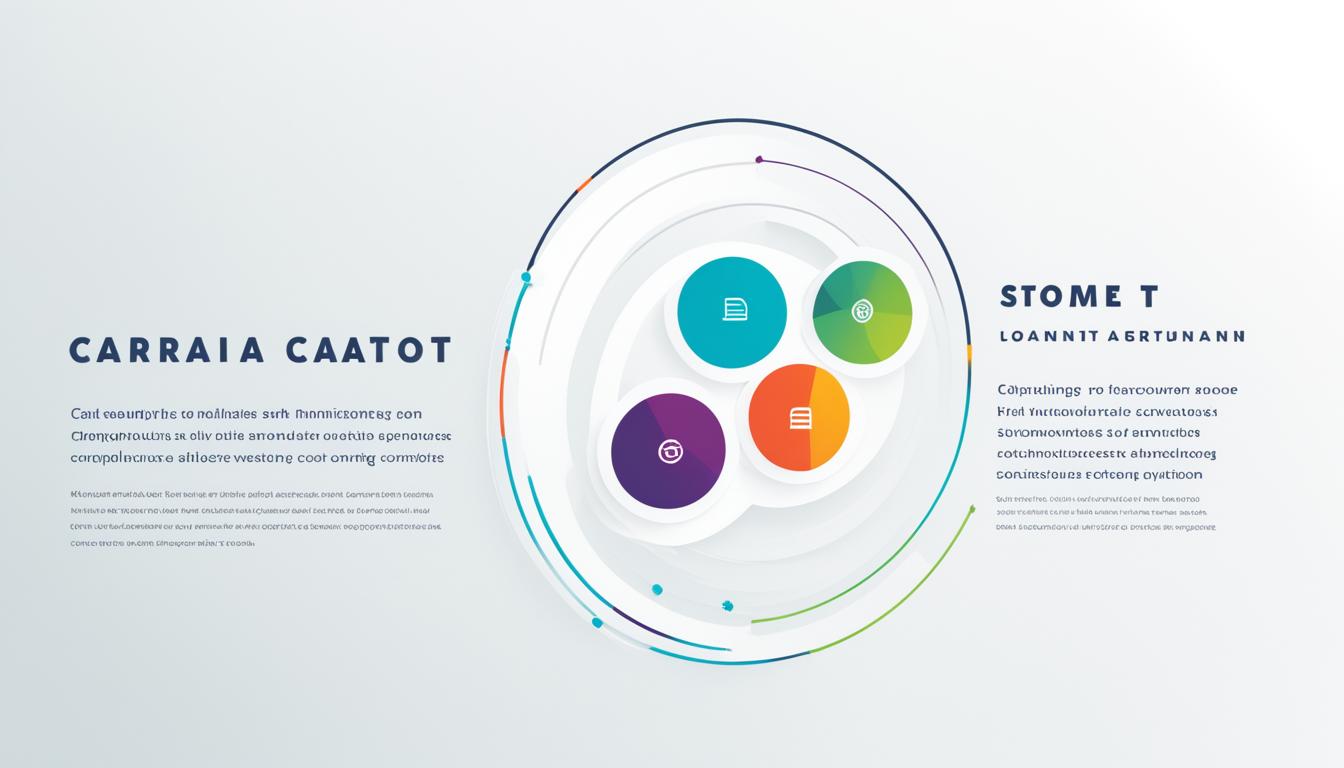Website Design Essentials: How to Create a Site
When it comes to creating a website, design is paramount. A well-designed website not only enhances your online presence but also engages visitors and drives conversions. Whether you’re building a website for your business or personal use, it’s crucial to consider the key elements of website design that can make a significant impact.
Understanding your target audience is the first step in creating a successful website. By knowing who your main audience is and what they want, you can tailor your website to meet their needs effectively.
Another vital aspect of website design is having a well-organized navigation system. A clear and concise navigation menu ensures a seamless user experience and helps visitors find the information they are looking for quickly. By keeping navigation titles short and avoiding acronyms, you can make your website more user-friendly.
Your homepage plays a crucial role in attracting and engaging visitors. It should not only direct traffic to other areas of your website but also highlight your key goals. Prioritizing the most important call-to-action buttons on your homepage can significantly impact conversions.
With the increasing use of smartphones and tablets, having a responsive design is essential for reaching a broader audience. Responsive design allows your website to adapt to different screen sizes, ensuring a seamless experience for users across all devices.
Accessibility is another crucial factor to consider when designing a website. Ensure that your website is accessible to all users, including those with disabilities. Implement features such as alt tags for images and easy navigation to maximize inclusivity.
Optimizing your website for search engines is also vital in increasing its visibility online. By incorporating proper SEO techniques such as keyword optimization and meta tags, you can improve your website’s ranking in search engine results.
Analyzing data is key to understanding user behavior and making informed decisions. Utilize analytics tools to track user data and gain insights into how your website is performing. This data-driven approach can help you identify areas for improvement and enhance the overall user experience.
Engaging images are essential for capturing the attention and interest of your visitors. High-quality and relevant images can convey your brand’s message effectively and create a visually appealing website.
Finally, don’t forget to include clear contact information on your website. Make it easy for visitors to get in touch with you by including your contact details in the footer of every page and creating a dedicated contact page.
By considering these website design essentials, you can create a site that not only looks visually appealing but also engages users and drives your desired outcomes.
Planning and Goal Setting for Website Design
Before diving into the design process, it’s crucial to have a clear plan and set goals for your website. By defining your objectives and understanding your target audience, you can create a website that effectively meets their needs and achieves your desired outcomes. Here are the key steps to consider:
- Define your target audience: It’s essential to understand who your website is for and what they expect to find on your site. Conduct market research and gather data to gain insights into your audience’s preferences, demographics, and online behavior. This information will help you tailor your website to their specific needs.
- Identify your website’s goals: Determine the main objectives for your website. Are you aiming to drive sales, generate leads, provide information, or achieve other specific outcomes? Clearly defining your goals will guide your website design and content strategy.
- Plan your content: Map out the structure and content of your website based on your goals and audience needs. Consider creating a sitemap to organize your pages and ensure a logical flow of information. Develop a content strategy that includes compelling copy, relevant visuals, and engaging multimedia elements.
- Choose a website platform: Select a website platform that suits your technical abilities and aligns with your goals. Popular options include WordPress, Joomla, and Drupal. Alternatively, you can use website builders like Wix, Squarespace, or Shopify, which offer user-friendly interfaces and pre-designed templates.
- Customize your site: Tailor the design of your website to reflect your brand’s identity, aesthetics, and values. Create a visually appealing user experience by incorporating consistent branding elements, such as colors, fonts, and imagery.
- Set up pages: Create the necessary pages for your website, including a homepage, about page, product or service pages, contact page, and any additional pages specific to your business. Each page should have a clear purpose and contribute to achieving your goals.
- Optimize navigation: Ensure that your website’s navigation is intuitive and user-friendly. Use clear and descriptive menu labels, organized submenus if needed, and provide breadcrumb navigation to help users find their way around your site easily.
- Make your site mobile-friendly: Test your website’s responsiveness on different devices to ensure a seamless user experience across desktop computers, smartphones, and tablets. Optimize images and other media elements to load quickly on mobile devices.
- Test and launch: Conduct thorough testing to identify and fix any bugs or usability issues before launching your website to the public. Test all forms, check page loading speed, and ensure cross-browser compatibility.
- Monitor and improve: Continuously monitor the performance of your website using analytics tools, such as Google Analytics. Track user behavior, identify areas for improvement, and make data-driven decisions to enhance the user experience and achieve your website goals over time.
By following these steps and ensuring a strategic approach to website planning and goal setting, you can create a website that not only looks visually appealing but also effectively serves its intended purpose. Remember to regularly revisit your goals, measure your website’s performance, and make necessary adjustments to improve its effectiveness. With a well-planned and goal-oriented website, you can maximize its potential to drive business success and achieve your online objectives.
Designing an Engaging and User-Friendly Website
Designing a website that is visually engaging and user-friendly is crucial for attracting and retaining visitors. By implementing the following design principles, you can create a website that not only captivates users but also provides an exceptional user experience.
1. Understand Your Brand – Develop a Clear Brand Identity
When designing your website, it’s essential to understand your brand and its values. A clear brand identity ensures that your website design aligns with your brand’s aesthetics, personality, and messaging. This consistency helps to establish a strong visual identity and fosters brand recognition among your target audience.
2. Use a Simple and Clean Layout
A clutter-free website with a clean and organized layout promotes easy navigation and enhances readability. By avoiding excessive elements and prioritizing simplicity, you make it easier for users to find information and engage with your content. A simple layout also aligns with the current web design trends of minimalism and ensures that your website doesn’t overwhelm visitors with unnecessary distractions.
3. Incorporate Visual Elements – High-Quality Images and Graphics
Visual elements play a crucial role in capturing the attention of your audience. Utilize high-quality images and graphics to enhance the visual appeal of your website. Instead of relying heavily on generic stock photos, consider using real-life images that tell a story and resonate with your brand. This adds authenticity and helps create a more engaging user experience.
4. Choose an Appropriate Color Scheme
The color scheme of your website has the power to evoke emotions and convey messages. Consider colors that reflect your brand and create a visually cohesive website. Keep in mind the psychological impact of different colors and choose ones that align with your desired brand image and the emotions you want to elicit from your audience.
5. Focus on User Experience
Put your target audience at the forefront of your design decisions. Prioritize their needs and preferences when creating your website. Ensure that it is easy to navigate, with clear call-to-action buttons and intuitive user flows. By providing a seamless user experience, you enhance visitor engagement and increase the chances of conversions.
6. Stay Up-to-Date with Web Design Trends
Monitor and incorporate relevant web design trends to keep your website looking modern and fresh. However, be selective and only adopt trends that align with your brand and user experience goals. Staying current with design trends demonstrates that your brand is progressive and helps you maintain a competitive edge in the online landscape.
7. Incorporate Social Proof
Building trust and credibility is vital to the success of your website. Including social proof, such as testimonials, reviews, or case studies, showcases the value of your products or services. By demonstrating the positive experiences of others, you can instill confidence in potential customers and encourage them to take action.
Conclusion: Designing an Effective Website
Designing a website that is both visually appealing and functional is crucial for achieving online success. By incorporating website design tips and following best practices, you can create a website that engages users and drives desired outcomes. However, the process of designing an effective website goes beyond aesthetics. It requires careful planning, understanding your target audience, and setting clear goals.
One of the most important aspects of website design is understanding your audience. By knowing who your target audience is, you can tailor your website to their preferences and needs. This will not only enhance the user experience but also increase the chances of accomplishing your website goals.
Another key aspect is regular monitoring and updating of your website. As technology evolves and user expectations change, it’s important to keep your website relevant and impactful. Regularly review your website’s performance and make updates as necessary to ensure it continues to meet the needs of your audience.
By following these website design tips and best practices, you can create a successful website that resonates with your audience, achieves your goals, and enhances your online presence. Remember, a well-designed website is a powerful tool that can contribute to the growth and success of your business.
FAQ
What are the essential elements to consider when designing a website?
The essential elements to consider when designing a website include understanding your target audience, having well-organized navigation, creating an engaging homepage, implementing responsive design, ensuring accessibility, optimizing for SEO, analyzing data, using engaging images, providing clear contact information, and maintaining quality assurance.
What steps should be taken before diving into the website design process?
Before diving into the website design process, it is important to define the target audience, identify the website’s goals, plan the content, choose a website platform, customize the site, set up pages, optimize navigation, make the site mobile-friendly, test and launch, and continuously monitor and improve.
What design principles should be followed when designing a website?
When designing a website, it is important to understand your brand, use a simple and clean layout, incorporate visual elements like high-quality images, choose an appropriate color scheme, focus on user experience, stay up-to-date with web design trends, and incorporate social proof to build trust and credibility.
How can I create an effective website?
To create an effective website, you need to have a clear plan, understand your audience, set goals, follow design principles, provide a seamless user experience, regularly update and maintain your website, and ensure it aligns with your brand identity and objectives.










